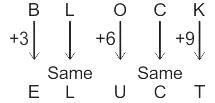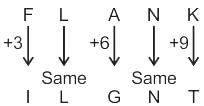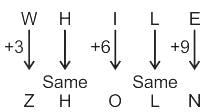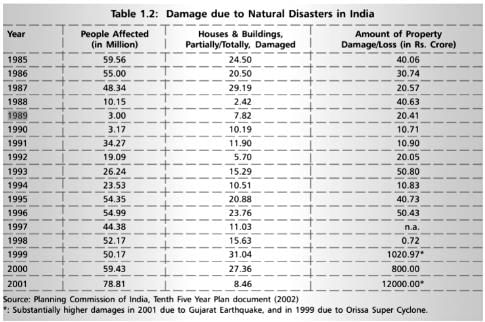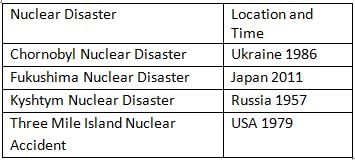-
Calculate ICICI's Total Clerks:
- Total clerks for all banks = 6420.
- Clerks in other banks:
- UNION = 2040, SBI = 1080, BOB = 1120, BOI = 640.
- Total (excluding ICICI) = 2040 + 1080 + 1120 + 640 = 4880.
- ICICI's clerks = 6420 - 4880 = 1540.
-
Determine Male and Female Clerks in ICICI:
- Ratio of male to female clerks = 7 : 4.
- Total parts = 7 + 4 = 11.
- Each part = 1540 / 11 = 140.
- Male clerks = 7 × 140 = 980, Female clerks = 4 × 140 = 560.
-
Find Total Officers in ICICI:
- Clerks per officer = 44.
- Total officers = 1540 / 44 = 35.
-
Calculate Male and Female Officers in ICICI:
- Ratio of male to female officers = 4 : 3.
- Total parts = 4 + 3 = 7.
- Each part = 35 / 7 = 5.
- Male officers = 4 × 5 = 20, Female officers = 3 × 5 = 15.
-
Link to BOB’s Male Officers:
- Given: Female officers in ICICI (15) = Male officers in BOB + 8.
- Male officers in BOB = 15 - 8 = 7.
-
Determine Total Officers in BOB:
- Total clerks in BOB = 1120.
- Clerks per officer = 35.
- Total officers = 1120 / 35 = 32.
-
Calculate Female Officers in BOB:
- Female officers = Total officers in BOB - Male officers in BOB.
- Female officers = 32 - 7 = 25
UGC NET Paper 1 Mock Test - 1 - UGC NET MCQ
30 Questions MCQ Test - UGC NET Paper 1 Mock Test - 1
To reduce the cost of functioning BOI bank was merged into SBI and the number of officers was reduced to 35 after the merger. Find the number of officers after the merger is how much more or less than the number of officers in SBI before the merger?
If the number of female officers in ICICI bank is 8 more than the number of male officers in BoB. Find the number of female officers in BoB bank, if the ratio of the number of male to female officers in ICICI bank is 4:3.
Find the difference between the number of male clerks of Union Bank and the number of female clerks of ICICI Bank.
Find the total number of officers in all given banks together.
Which teaching strategy best promotes the development of higher-order thinking skills, such as analysis and critical evaluation?
Identify the correct statements related to Inquiry-Based Learning.
Statement I: Inquiry-Based Learning is a teacher-centric model resembling Direct Instruction.
Statement II: The Inquiry-Based method involves posing thought-provoking questions to students.
Statement III: In Inquiry-Based Learning, students passively receive knowledge.
Statement IV: Inquiry-Based Learning encourages critical thinking and creativity among students.
Which of the following is correct according to Gandhi?
I. Learning should provide opportunities for children to become physically active.
II. Children should have the freedom to create their own models of knowledge about the world.
What strategies can a teacher employ to enhance the rapport and connection with students in the classroom?
Given below are two statements: One is labelled as Assertion A and the other is labelled as Reason R:
Assertion (A) : With global warming, organisms that were formally restricted to warmer regions will become more common towards the poles.
Reason (R) : Geographic distribution of organisms could not be significantly altered by climate change.
In the light of the above statements choose the most appropriate answer from the options given below
In a certain code language, ‘BLOCK’ is written as ‘ELUCT’, and ‘FLANK’ is written as ‘ILGNT’. How will ‘WHILE’ be written in that language?
Which of the following are the main characteristics of a flipped classroom approach?
A. Lessons are primarily delivered via direct instruction from the teacher in class.
B. Learners engage with new material for homework to prepare for the next class.
C. In-class time is predominantly used for exercises, discussions, or projects.
D. It negates the need for homework.
Choose the correct answer from the options given below:
In the context of Mimamsa (Classical Indian School of hermeneutics and exegesis), the fallacy of relying on an unreliable source of knowledge is referred to as:
Reason (R) : Using the projection technology facilitates extensive coverage of course contents.
Which among the following statement is/are correct regarding Kyoto Protocol?
1) It is legally binding for Annex 1 Countries
2) It emerged from the deliberation of COP3 to the UNFCCC
3) The signatories have to reduce their individual Green Houses emission by 5.2% from 1990 level
Arrange the given years in descending order on the basis of number of people affected by natural disasters in India?
(A) 1988
(B) 1989
(C) 1985
(D) 1991
(E) 1994
Choose the correct answer from the options given below:
Consider the following statements and try to find out the type of Upward communication.
Statement I: The flow of the massage always follow levels of a hierarchy
Statement II: Communication between HR manager and Finance manager is an example.
Given below are two statements:
Statement I: Upamana is knowledge derived from comparison and roughly corresponds to analogy.
Statement II: Valid knowledge is called prama and, is defined as the right apprehension of an object.
In the light of the above statements, choose the most appropriate answer from the options given below:
Which of the following factors is the most important in the site selection for a nuclear power plant?
Which of the following Learning Management Systems (LMS) is open source?
A. Moodle
B. Blackboard
C. alentLMS
D. Google Classroom
Choose the correct answer from the options given below:
Given below are two statements:
Statement I: According to Nya̅ya philosophy an argument proceeds only on those issues that are completely unknown.
Statement II : According to Nya̅ya philosophy an argument does not proceed on those issues that are well established.
In the light of the above statements, Choose the most appropriate answer from the options given below:



